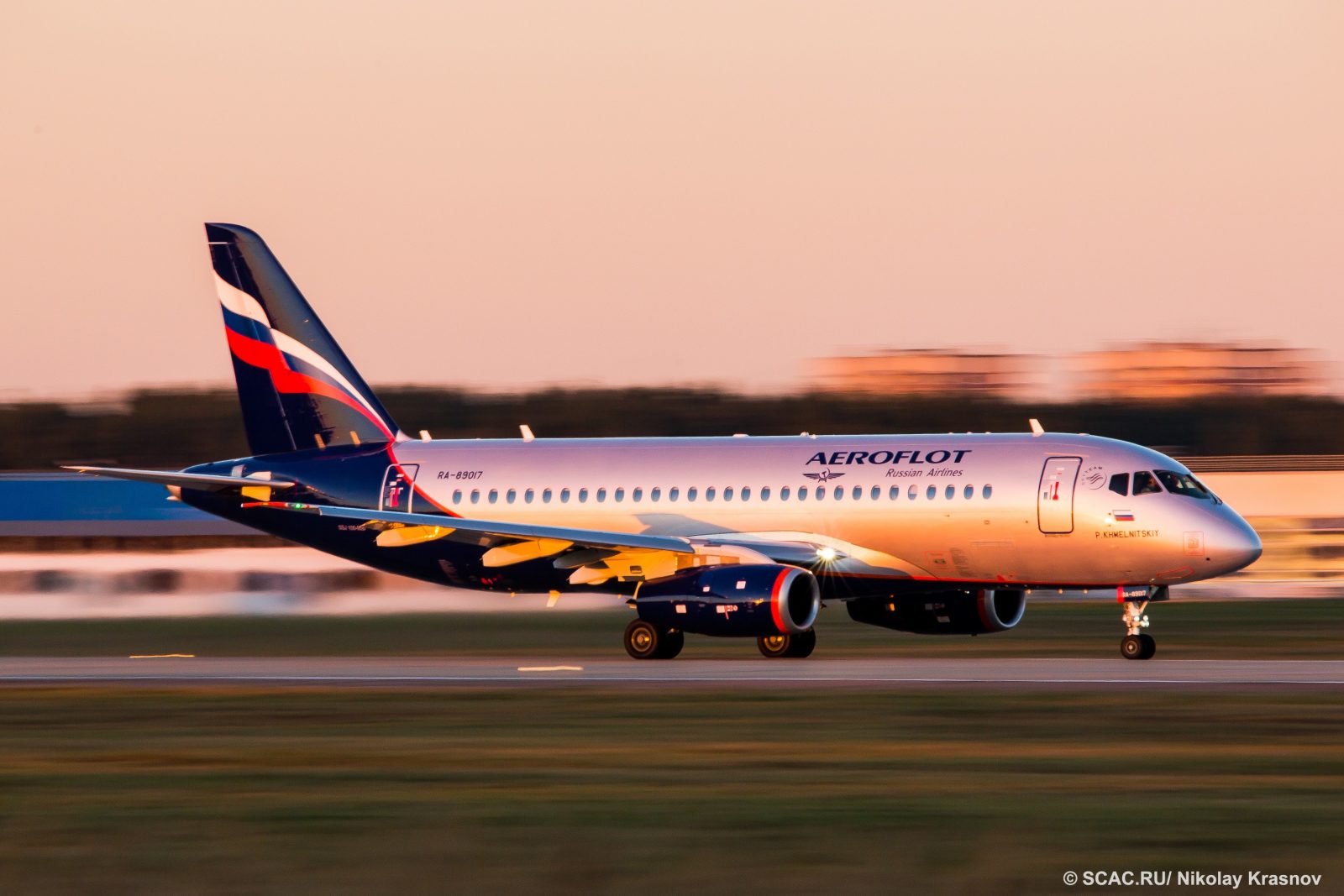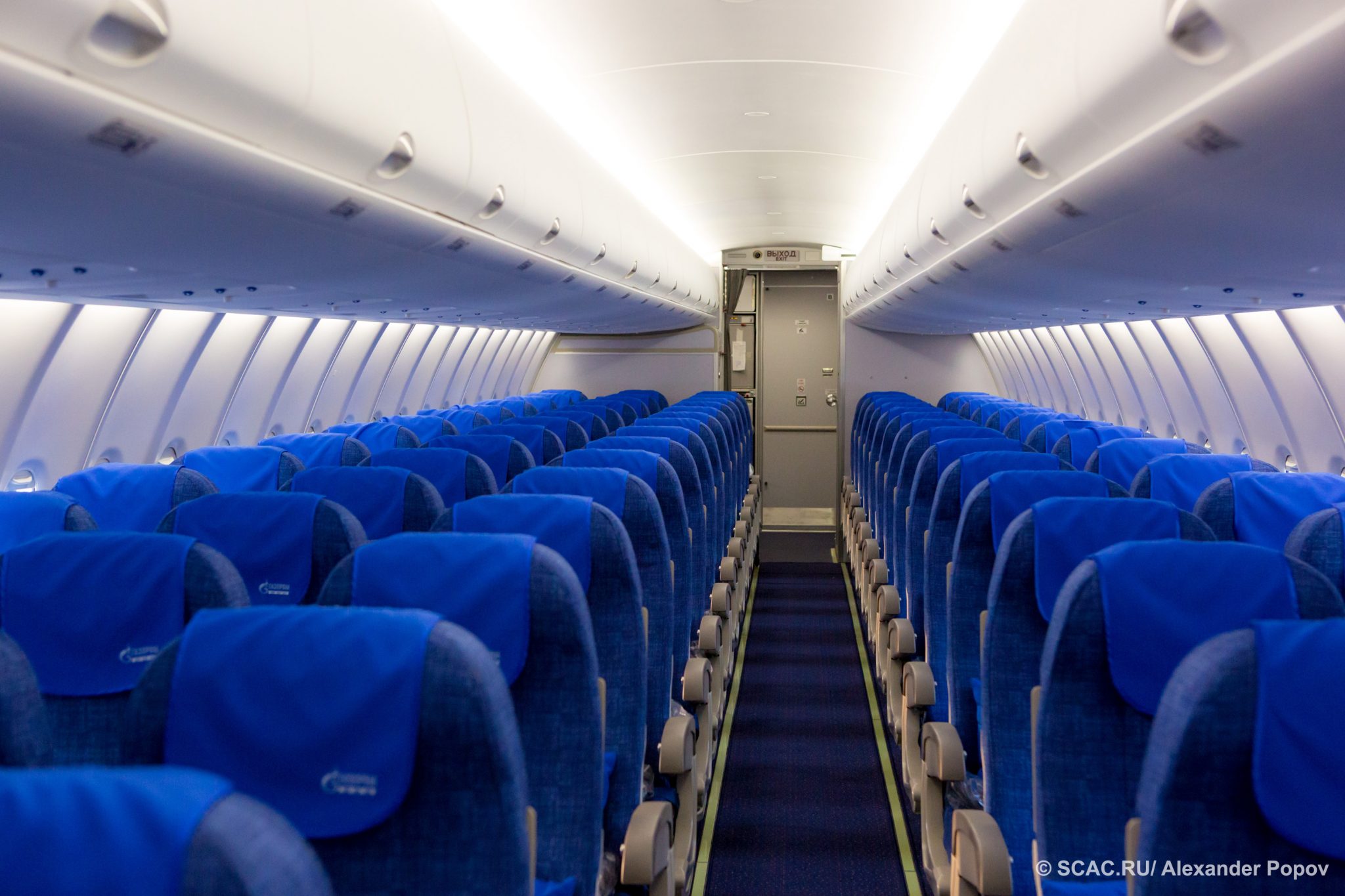
A Sukhoi Superjet 100-95 regional jet operated by Russian airline Aeroflot has been forced to make an emergency landing at Moscow’s Sheremetyevo airport after a loss of cabin pressure according to the Aviation Herald. The emergency incident happened yesterday and comes just two weeks after another Sukhoi Superjet crash-landed at the same airport with the loss of 41 lives.
Aeroflot flight SU1206 had just taken off from Sheremetyevo bound for Samara which is located close to the Russian border with Kazakhstan but the pilots were forced to make an emergency descent soon after. The flight crew were able to land without any further incident around 30 minutes later, although the plane remains on the ground over 24 hours after the drama unfolded.
Rather unusually, the Russian media has decided not to cover the incident despite the fact that the Sukhoi Superjet 100-95 is currently subject of investigation – or perhaps that’s exactly the case why.
Investigators haven’t yet determined what exactly caused the May 5th accident of Aeroflot flight SU1492 but civil aviation officials in Russia, Roaviatsia have confirmed that a lightning strike to the plane knocked out the radios and other electrical equipment including the autopilot.

When the pilots tried to make an emergency landing, the plane bounced hard on the runway resulting in damage to the engines and landing gear. It’s still unclear how a lightning strike, which modern commercial aircraft are insulated from, could cause such widespread and devastating problems.
The Sukhoi Superjet 100-95 has become somewhat of a national embarrassment. According to the English language Moscow Times, the plane cost around $2 billion USD to be developed and was meant to compete head-on with regional jets produced by Bombardier and Embraer. At one point, Sukhoi were in talks with a number of international airlines including Alitalia and there were plans to sell at least 300 Superjet’s around the world.
Those ambitions were apparently killed off by a 2012 incident in which a Superjet crashed into an Indonesian mountain during a show flight. The crash killed 45 people, including engineers and developers.
Aeroflot is said to only have bought the plane because of financial incentives offered by the Russian government. “Who, if not us, will learn to fly it?” Aeroflot’s chief executive Vitaly Savelyev told the TASS news agency.
“Yes, it entails certain expenses and headache. If Aeroflot were a private business, perhaps the shareholders wouldn’t want to do it. But we understand the situation and believe that the SSJ100 will fly,” Savelyev.
Aeroflot operates the largest Superjet 100-95 fleet with around 50 planes currently in operation. At present, there are no plans to ground the plane despite allegations of manufacturing defects, shoddy workmanship and faulty parts.
Mateusz Maszczynski honed his skills as an international flight attendant at the most prominent airline in the Middle East and has been flying ever since... most recently for a well known European airline. Matt is passionate about the aviation industry and has become an expert in passenger experience and human-centric stories. Always keeping an ear close to the ground, Matt's industry insights, analysis and news coverage is frequently relied upon by some of the biggest names in journalism.







